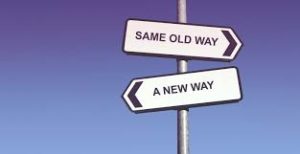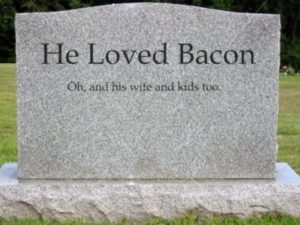
I’ve blogged previously about by attempt to analyze my ancestor’s health records to make lifestyle choices to keep me well (See Using Your Genealogical Info to Make You Healthy). This past week, MyHeritage.com has added a new feature that you can use to include your family’s medical history. It is purportedly private and secure, allowing you to keep all of the health records of the living and deceased in one place so you can download and print a checklist of the entered information to share with your physician.
To begin, you must first click that you have read the most lengthy Terms and Conditions I’ve ever seen. The next page asks you if your siblings, parents, aunts/uncles and grandparents had any of 10 medical conditions, such as stroke, heart and various cancers. For any condition selected, possible names from your tree are then provided for you to mark. Warning: If you have a big family in the past 3 generations, you’re going to have a lot of clicking to do! I clicked yes for heart attack as one of my husband’s relatives had that condition. To identify who had the heart attack, the program listed my husband, his siblings, aunts/uncles and grandparents for a total of 18 people. Only one of them had ever had a heart attack but the program will not allow you to move forward unless you click no for all of those who never had one. Of the 4 health conditions I selected, only 3 individuals needed a yes so this process was slow and could have been really lengthy if there had been additional medical conditions selected.
Next you can add allergies, other health conditions to include the age at onset, and other characteristics, such as height, weight and eye color. I found it interesting that height is entered in inches – I would have expected centimeters.
One of the options is hair color. In our family, that changes with age so I wasn’t sure if I should put blonde (from someone’s youth) or brown (in adulthood).
Sleep, smoking and exercise can also be added. No option existed for someone who never smoked but was raised in a household of smokers which I think is important.
Once you’ve entered the info, various icons appear under the individual that had been selected. This way, you can readily see patterns, if any, for a family condition.
Errors can be corrected quickly. I wrongly entered a stroke for my father-in-law. Simply click on the icon, a panel appears with the conditions identified. Clicking on the 3 dots (…) a choice to delete appears to remove the mistake.
Once you’re done adding the information for all of your relatives, you can click on the LIST button on the upper right ribbon to obtain the names of the individuals that had conditions entered. Besides the individual’s name and medical condition, birth, death, onset age and relationship is included.
The problem I see is that many of the initial conditions listed are due to lifestyle. I’m not sure it is helpful to your physician to know that a grandparent had diabetes if no one else in the family did and you follow a good diet and exercise regime.
Under the Nutrition category, there are several choices – omnivore, vegetarian, vegan, pescatarian, paleo and other – but those options alone do not tell a complete picture of nutrition. (I’m thinking about one of my former roommates who was a vegetarian. Her diet consisted of skipping breakfast, potato chips for a late morning snack, peanut butter and jelly for lunch, pretzels for an afternoon snack and a salad saturated in a mayo based dressing for dinner.)
A bigger concern I have is with entering misinformation. Unless the medical condition was definitely known, including wrong information could be a serious problem. Like with all genealogy, records should be consulted before including data going by memory alone.
I asked two medical providers in my family what they thought of the program. One is a physician and the other works as a chemical engineer for a medical lab. Both laughed and said this was a serious waste of time. Most of the medical conditions listed are due to lifestyle. Additionally, living conditions of someone 75 years ago will not be the same as our lives today and that greatly impacts health.
They both recommended, if there is a pattern of a medical condition in a family, a consultation with a geneticist would be more beneficial than taking the time to input the data on MyHeritage and presenting a list to your health care provider. An added caution here is not to think that the DNA test you purchased for genealogy purposes is going to provide the specialists with the information they need. Geneticists would provide a DNA test that is analyzed far differently than what is given by a genealogy company. If you have concerns about your family’s health, the new MyHeritage program is not going to be beneficial to your medical provider.









